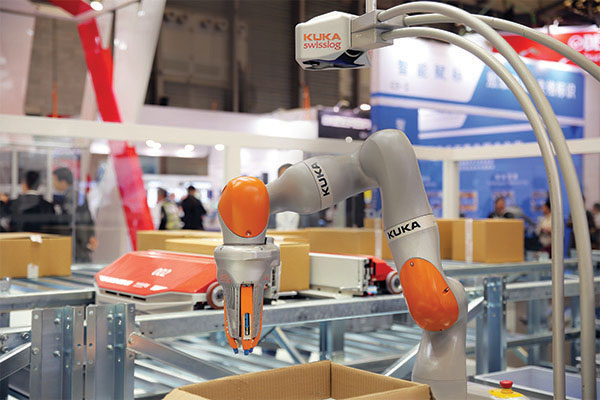Gartner: demand for robotic goods-to-person systems will quadruple through 2023
Drivers include need to support safe social distancing, while also increasing productivity
Through 2023, demand for robotic goods-to-person (G2P) systems will quadruple to help enforce social distancing in warehouses, according to Gartner, Inc. With G2P systems, the robots deliver the goods to a person who remains in one place.
“Fallout from the COVID-19 pandemic is increasing demand for robotics in warehouses and distribution centers,” said Dwight Klappich, vice president analyst with the Gartner Supply Chain practice. “G2P systems are an easy and economical way to not only enforce social distancing, but also improve productivity.”
While there’s a variety of technological solutions to address social distancing in warehouses – including technology that traces each employee’s move – robotic systems are easier to implement and less invasive. “Keeping people in place and using a virus-resistant robot to move goods around respects people’s privacy and keeps them safe at the same time,” Mr. Klappich added.
In addition to this short-term value, G2P systems also drive broader long-term improvements in efficiency and productivity. Advanced systems also offer additional benefits such as improved storage density.
Gartner also predicts that through 2024, 50% of supply chain organizations will invest in applications that support artificial intelligence (AI) and advanced analytics (AA) capabilities.
“The COVID-19 pandemic has amplified the need for supply chain organizations to seek tools that help them make better and more informed decisions faster,” said Andrew Stevens, senior director analyst with the Gartner Supply Chain practice. “Leading organizations use AI and AA to dig through the vast amounts of data they generate to understand what is happening in their business now and – more importantly – what is likely to happen in the future.”
Companies will continue to invest in applications that embed, augment or apply AI and AA tools. This may be to address foundational areas such as data quality or connecting disparate silos, or strategic objectives such as migrating to more automated, resilient and smarter applications.
“Supply chain leaders should adopt a broad and holistic perspective when it comes to AI and AA. These technologies are increasingly ubiquitous, and there are many ways in which they can be applied – such as data mining for smart manufacturing, visibility tools and autonomous transportation, and to aid customer retention,” Mr. Stevens concluded.
Gartner clients can read more in “Predicts 2021: Supply Chain Technology.”











